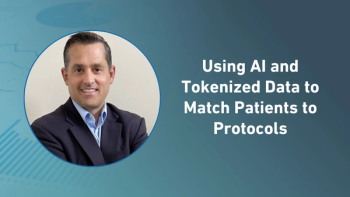Recently I participated in a “Partners in Interoperability” workshop in Washington DC. The meeting brought together senior decision makers from the clinician, payer and biopharmaceutical communities to exchange ideas on how to make more progress toward a mutual, worthy goal of “an interoperable healthcare system that leads to better patient care and improved outcomes.” The focus of the meeting was on how to achieve this goal through the use of FHIR® - HL7’s Fast Healthcare Interoperability Resources standard.
FHIR (pronounced “fire”) is a new standards-based framework and platform that makes it possible to tap directly into Electronic Healthcare Record (EHR) systems to retrieve and even create protected healthcare and administrative data. It is based on a small set of ~100 core information resources, modular bundles of healthcare information, which can be tied to different databases and can be easily deployed for multiple purposes. In the USA, FHIR has attracted great interest from the Office of the National Coordinator as a potential solution to the requirement for a general Applications Programming Interface (API) which is part of the next phase of Meaningful Use, and is also being used for the NIH Sync4Science pilot. Though still an evolving standard, FHIR has already been adopted by many of the largest EHR vendors and other adopters for production uses, and is the focus of a major collaborative effort of more than 75 stakeholder organizations to conduct testing and produce implementation guides through Project Argonaut. FHIR is based on the same modern technologies that drive web platforms like Facebook and Twitter, which makes it possible to rapidly develop patient-centric apps for browsers and mobile devices. And FHIR has developed a groundswell of excitement because it is both human readable and understandable by programmers, scientists and clinicians. Lastly, FHIR is free. At the Partners workshop, there was great interest in exploring how FHIR could be used in biopharma to provide a standard API for evaluating the feasibility of eligibility criteria, supporting patient recruitment, and harvesting data from EHRs to support clinical studies, with additional interest in using it for ePRO apps and providing real world evidence. The potential benefits to biopharma should be apparent. FHIR, by opening a window into the world of higher quality digital healthcare data, and a lens that presents it in a semantically consistent manner, can truly re-engineer how pharma collects evidence about how drugs are performing in the real world, and a new method for collecting data for clinical trials that truly involves a consistent and comprehensive solution to using the actual patient health record as the ultimate eSource. In Jack London’s classic story To Build a Fire, a man and his dog are wandering in a snowy wilderness during a period of extreme cold. He builds a fire for warmth to eat his lunch, and then continues his journey, but in his haste to reach his destination waits too long before building another fire, and ultimately dies of frostbite. In an industry of closed proprietary systems and silos of inconsistent data, with antiquated, complex processes that seem to endlessly transform and over-process data over and over again in the path from patient to analysis, it sometimes feels to me that biopharma is also wandering in a frigid wilderness of its own creation. It’s time we built a FHIR. Wayne Kubick is Chief Technology Officer of HL7. He can be reached at wkubick@hl7.org.






.png)



.png)



.png)
.png)
